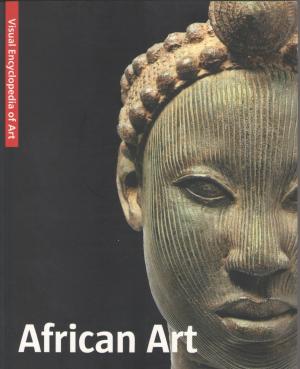
African Art

The Visual Encyclopedia of Art
ISBN 9781566499781 (paperback)
Published in December 2012
The art of sub-Saharan African has a long history, although it is difficult to reconstruct precisely because many works, being made from wood and earth, have disappeared without trace, and archaeological excavations, which could enrich our knowledge of the region, are still rare.
Nonetheless, what has been preserved—largely works from the past 150 years, although there are some which date back even thousands of years—is already substantial and provides evidence of a great variety of artistic traditions, which can be traced back to broad historical and geographical areas and to ethnic or tribal groups.
To fully appreciate the meaning of these works, it is necessary to relate them to the forms of life, societies, and religious beliefs that led to their creation or use.
Although they may vary from place to place, some elements seem to be recurrent and common to all African artistic traditions. Statues are often figures of ancestors or deities and sacrifices are offered to them to maintain communication with the other world, between gods and humans, between the living and the dead. Those masks that are brought into the village from the forest or are displayed during initiation rites guarantee social order, imparting the values of community, and punishing transgressors. The fertility of women and the fields is a recurrent theme expressed by art. In societies with no writing system, art offered material support for the word, also facilitating the transmissions of traditions.
While much attention is often paid to form, objects are almost never created solely for pleasure. These works are not the expression of the artists’ free imagination nor are they intended for the individual enjoyment of a collector. Far more ambitiously, their purpose is to contribute to the order of the world, the well-being of the community, and to maintaining life.
Nonetheless, what has been preserved—largely works from the past 150 years, although there are some which date back even thousands of years—is already substantial and provides evidence of a great variety of artistic traditions, which can be traced back to broad historical and geographical areas and to ethnic or tribal groups.
To fully appreciate the meaning of these works, it is necessary to relate them to the forms of life, societies, and religious beliefs that led to their creation or use.
Although they may vary from place to place, some elements seem to be recurrent and common to all African artistic traditions. Statues are often figures of ancestors or deities and sacrifices are offered to them to maintain communication with the other world, between gods and humans, between the living and the dead. Those masks that are brought into the village from the forest or are displayed during initiation rites guarantee social order, imparting the values of community, and punishing transgressors. The fertility of women and the fields is a recurrent theme expressed by art. In societies with no writing system, art offered material support for the word, also facilitating the transmissions of traditions.
While much attention is often paid to form, objects are almost never created solely for pleasure. These works are not the expression of the artists’ free imagination nor are they intended for the individual enjoyment of a collector. Far more ambitiously, their purpose is to contribute to the order of the world, the well-being of the community, and to maintaining life.